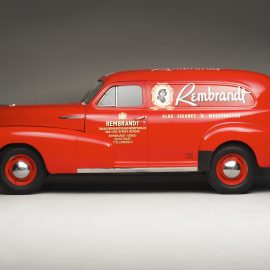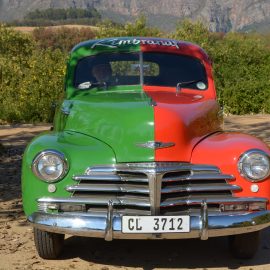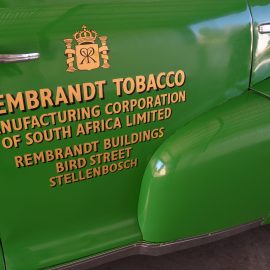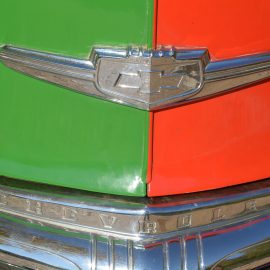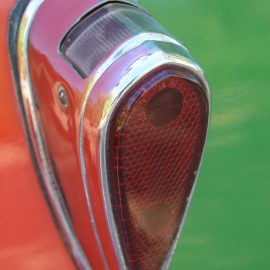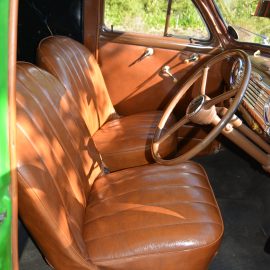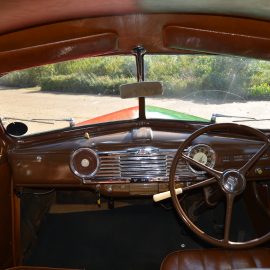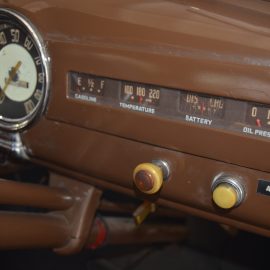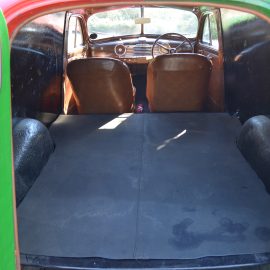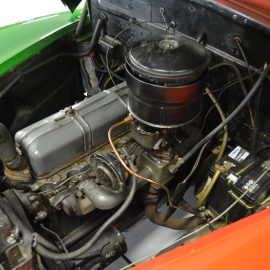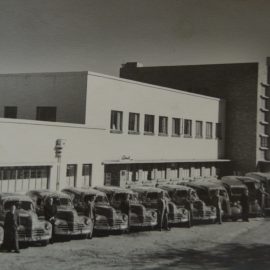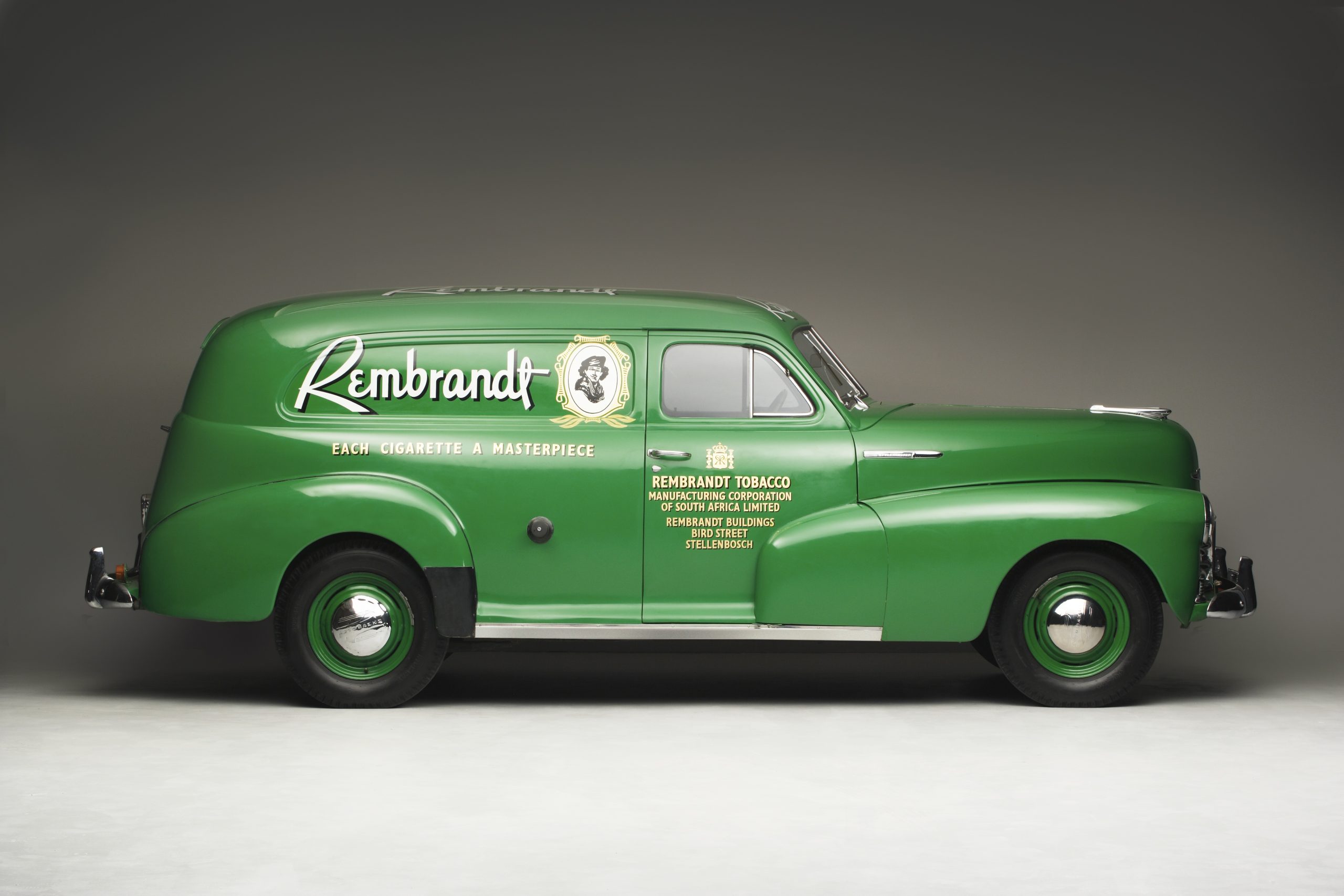
31 May Anniversary Celebration: Rembrandt Chevy Van
Red and green should never be seen unless there’s something in between… Okay, that’s a bit of a play on an old saying, but FMM’s Rembrandt Chevy had a split personality with one aim in mind – and it was a success. Mike Monk goes smokin’ in a 75-year-old Stylemaster…
At the end of 2017 when General Motors SA announced that it was ceasing the manufacture and supply of Chevrolet vehicles to the domestic market came as quite a surprise to many South Africans. For elder citizens, the feeling was likely tinged with shock and sadness, because the brand has been an integral part of the growth and development of this country for over 100 years in both private and commercial applications.
GM first penetrated the local market back in 1913 by importing Chevrolet vehicles into the country. Then in 1925 one of the first representatives of the GM Corporation in South Africa, Nathaniel Tuxbury, set up a temporary factory in Darling Street, Port Elizabeth. Three years later, the Kempston Road assembly plant was established and in just 12 months, 25 000 Chevrolets were built. By 1936, GM SA was also assembling Buick, Cadillac, La Salle, Oakland, Oldsmobile, Opel, Pontiac and Vauxhall ranges in addition to GMC and Bedford trucks. Without doubt, GM’s products played a vital role in motorising this country.
Many businesses used Chev commercial vehicles in their transport fleets, one of which was Rembrandt. The Rembrandt Tobacco Corporation was established by Dr Anton Rupert in 1948, and the first cigarettes were manufactured in an old Paarl flour mill on June 12. Dr Rupert was looking for a way to promote his new Rembrandt cork-filter-tip cigarettes and came up with the idea of branding his fleet of delivery vans – but not just simply with signage on the vehicles. Oh no. Paint them in two colours, the left side bright red with Afrikaans wording, the right side bright green with English lettering, thus creating a bilingual mobile advertising hoarding! The association was simple: Rembrandt plain cigarettes were sold in green packets, Rembrandt filter cigarettes in a red packet… The effect of this pioneering campaign was dramatic to say the least. People would see a red van going one way and a green one coming back – or so they would think! This gave the impression that the fleet was far bigger than it was. Sales soon picked up, and the rest, as the saying goes, is history.
Chevrolet’s post-war model range was essentially made up of facelifted versions of its 1942 line-up and, once the world was at peace, Chevrolet immediately resumed its place as America’s best-selling brand – “Well worth waiting for” was the universal advertising tag line. Described as ‘conservative in styling and engineering’, Chevys were affordable and, as a result, popular. The 1946 Stylemaster was the base trim level model (Fleetmaster was the upmarket version) and evolved from the 1942 Chev Master Deluxe and was offered in 2-door Town Sedan, 4-door Sport Sedan, 2-door Business Coupe and 2-door 5-Passenger Coupe models as well as the low volume Fisher-bodied Sedan Delivery. (GM’s Australian subsidiary, Holden, produced a pick-up version – locally referred to as a ‘ute’.)
In South Africa, the ’46 Chevys were strong sellers and a redesigned grille was the only real change made for 1947, to which a T-shaped vertical centre bar was added for 1948 along with new bonnet and nose emblems. Windows had black rubber surrounds. Inside, the three-spoke steering wheel no longer carried a horn ring, and the dashboard was painted.
The engine was a development of GM’s Stovebolt Six that first appeared in 1929, which was not big on performance but did boast a more relevant-for-the-time reputation for dependable service. The 3548cc cast-iron in-line six featured overhead valves with solid lifters. The con-rods were lubricated by using an oil trough built into the oil pan fitted withspray nozzles squirting a stream of oil at the connecting rods, which were equipped with ‘dippers’ that supplied oil to the rod bearings. The crankshaft ran in four main bearings. With a single Carter carburettor and running a modest 6,5:1 compression ratio, the motor put out 67 kW at 3 300 r/min and a healthy 236 N.m of torque at a lowly 1 200. Top speed was around 120 km/h.
Post war, the first Chevrolet to roll out of Kempston Road happened on 19 October 1946 and manufacturing facilities were expanded the following year. But it was only in 1948 that raw material supplies allowed production to get back up to speed. In February that year, no less than 2 795 cars and commercials were assembled during the 23 working days, setting a company record.
In 1976, the Rembrandt Group put out feelers for a 1948 (Series 1500 FJ) Chev Stylemaster Sedan Delivery to restore as a replica of those first vans, none of which appears to have survived the in-between years. As luck would have it, an abandoned van that had been bought for R100 from a farm just outside Rustenburg was offered and duly purchased. A ground-up restoration was undertaken that included a period Stellenbosch white-lettering-on-black registration number CL 3712. After spending time being used for promotional work by the Rembrandt Museum, the Chevy was moved to the Heidelberg Motor Museum. When the Heidelberg collection was relocated to Franschhoek to form the basis of FMM, the Chevy continued to be a star attraction and 47 years after its rebirth is still going strong.
Fired up and idling contentedly, it pulls with ease and once into top of the three-speed column-shift gearbox, it exudes a strong, unbreakable character. Steering is not too heavy, helped by the big steering wheel, but Rembrandt’s representatives must have developed strong biceps driving these distinctive vehicles around the country. There are individual, leather-upholstered front seats rather than the expected bench, but they are comfortable. The view forward through the split windscreen predominantly over the green side of the bonnet is ample enough, but the small side glass does create a bit of a ‘hemmed in’ feeling – must have been a hothouse on long summer journeys. Behind, the cargo space – accessed from the rear by a single left-hinged door – is huge with a flat floor, but there is nothing to prevent goods sliding forward into the driving compartment.
Today, the Rembrandt Chevy sedan delivery van is as visually striking as it was 75 years ago and stands testimony to the contribution these vehicles played in helping to build a commercial empire – one of many. After being such a significant player in the development of South Africa, it was sad to see the bow tie being put away back in 2017.




